Seametrics Turbo Turbidity Logger: Boost your Turbidity Monitoring
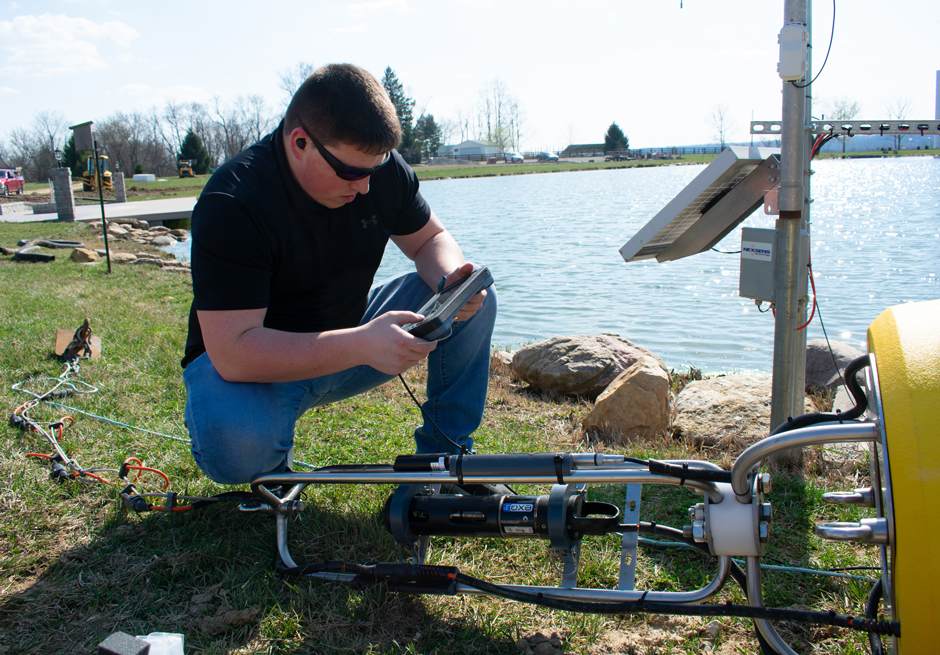 Environmental scientist, Joe Davidson, prepares the Seametrics Turbo Turbidity Logger for deployment on a NexSens Data Buoy. (Credit: Emma Jones / Fondriest Environmental)
Environmental scientist, Joe Davidson, prepares the Seametrics Turbo Turbidity Logger for deployment on a NexSens Data Buoy. (Credit: Emma Jones / Fondriest Environmental)The Seametrics Turbo Turbidity Logger is a self-cleaning turbidity sensor capable of internally logging over 260,000 data records. The sensor enables researchers, compliance officers, and contractors to monitor turbidity in various applications, from construction and dredging sites to wastewater effluent.
Due to its narrow width, this device can be deployed in a range of areas, from small well spaces to rivers and streams. The stainless steel housing and built-in wiper allow the sensor to withstand long-term deployments and reduce the need for maintenance trips.
The logger accurately records temperature and turbidity up to a depth of 50 meters. The turbidity sensor within the logger complies with the ISO 7027 international standard for nephelometric turbidity measurements and measures a range of 0–3000 NTUs. The logger can be deployed in environments that experience frigid temperatures (down to -20 °C) and extreme heat (up to 50°C) while reading accurately between 0-40°C.
| Parameter | Range | Accuracy | Resolution |
| Turbidity | 0–3000 NTU | ±2% or ±2 NTU @ 25°C (whichever is greater) | ±3 NTU |
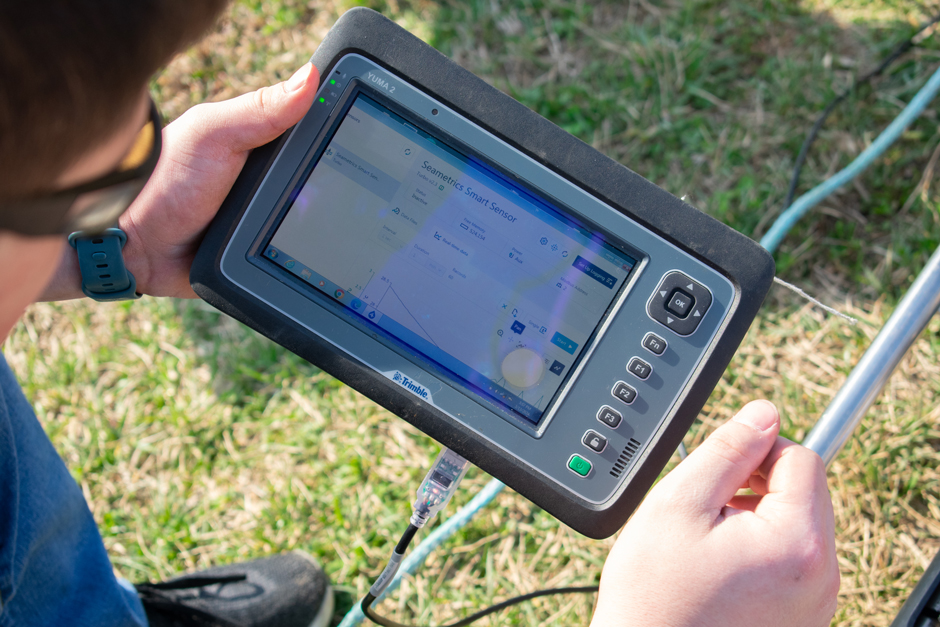
Davidson configures the Turbo Logger in the Aqua4Plus software before deployment. (Credit: Emma Jones / Fondriest Environmental)
Easy to Work with PC Software
To set up the device, the user will need a Seametrics Smart Sensor USB Communications Kit, an auxiliary power box, and the Aqua4Plus software. The power box includes (8) user-replaceable AA batteries and two ports: one for the sensor connection and the other for the USB connection. The sensor and USB cable have weather-resistant connectors compatible with the ports on the auxiliary power box so that they can be used in the field or the laboratory.
Once connected to the power box, the user can communicate with the sensor using the Aqua4Plus software. The main screen in the software shows the available memory and any data files recorded by the sensor. These files can be downloaded for review or further analysis.
Real-time data can also be viewed in both tabular or graphical form for spot-sampling or checking data accuracy. For unattended logging, the recording interval and duration of the overall deployment can be configured.
Deployment
For internal logging, the user can set and save a deployment template. The deployment template details the interval between each reading and the overall duration of the deployment.
To conserve battery life, the logger can be powered continuously or only when taking a reading. Additionally, the deployment can be split into phases with differing logging intervals and durations. For instance, the first phase can log readings every 15 minutes for 5 days, and the second phase can log readings every 10 minutes for 3 days. This feature is handy for projects that have changing monitoring needs.
Once a deployment template is set, the user can deploy the auxiliary power box and sensor. The power box is lightweight and only requires a few bolts to mount onto a nearby pole or other mounting apparatus. The sensor can then be lowered to the desired depth.
Periodically, during the deployment, the user can connect to the communications port and download the logged data. At this time, the battery power can be reviewed to see if the (8) AA batteries require replacement. The battery replacement is easy and similar to replacing batteries in any small electrical device.
The sensor also has multiple communication protocols (SDI-12 or Modbus RS485) to connect with external data loggers and telemetry systems. Instead of periodically visiting the site to download data, these telemetry systems can gather and transmit data from the sensor in real time to a web-based data portal. Real-time data is crucial for compliance projects to ensure production is halted when turbidity levels reach a specific threshold.
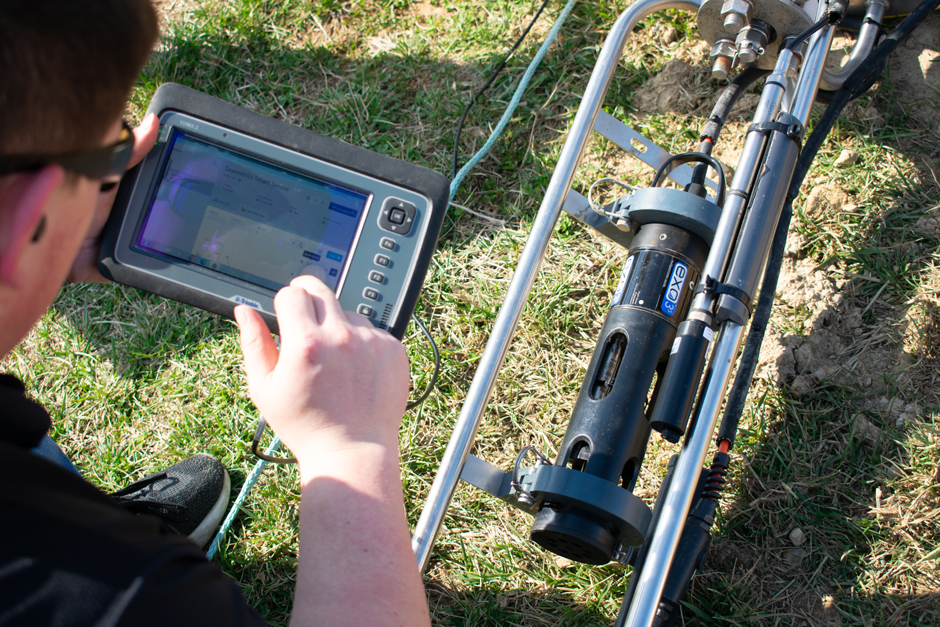
A Seametrics Turbo Turbidity Logger is mounted on an instrument cage for deployment in the Environmental Field Station pond. (Credit: Emma Jones / Fondriest Environmental)
Real-World Turbidity Monitoring Applications
Fluctuations in turbidity levels, whether higher or lower, may disturb and create instability in an ecosystem and lead to unexpected consequences. Government officials, researchers, and contractors monitor turbidity to know when and how to act when changes occur, whether naturally or by human means. These professionals use real-time or stand-alone turbidity monitoring equipment to comply with laws and guidelines regulating turbidity levels.
The Seametrics Turbo Turbidity Logger can be used in these applications for spot sampling, long-term internal logging, or real-time monitoring with a telemetry system. For instance, loggers can be deployed upstream and downstream of a construction project to ensure turbidity measurements do not exceed a threshold.
Stand-alone or real-time systems can be deployed at multiple locations along a river to gather baseline turbidity levels or monitor seasonal fluctuations. The versatility of the Seametrics Turbo Turbidity Logger, along with its rugged design, including a wiper, makes it suitable for nearly all turbidity monitoring applications.
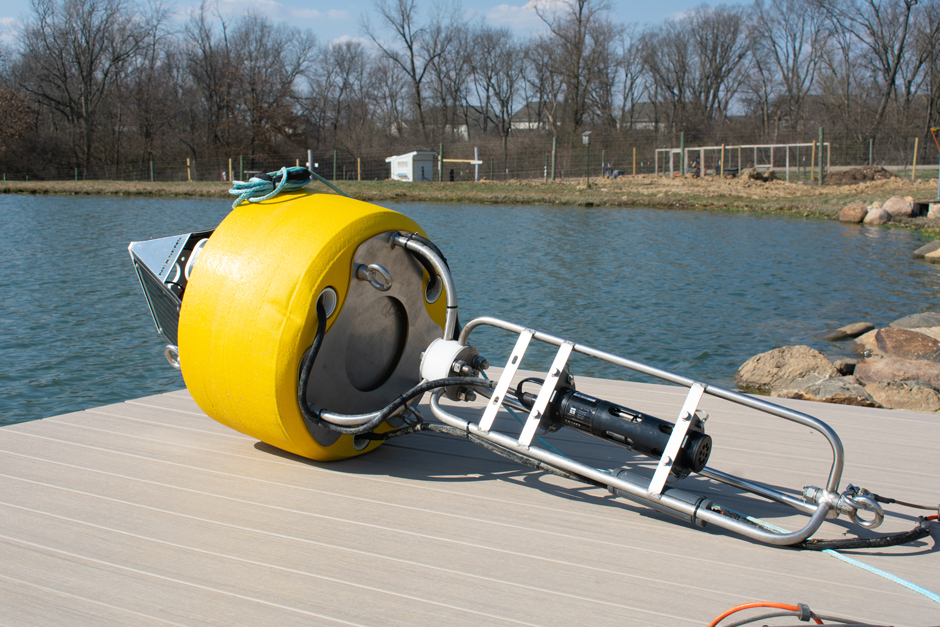
A NexSens Data Buoy is prepared for deployment with a Seamtrics Turbo Turbidity Logger, a YSI EXO3s Sonde, and a NexSens TS210 Thermistor String. (Credit: Emma Jones / Fondriest Environmental)
Fondriest Environmental Field Testing Analysis
Fondriest Environmental scientists wanted to test the accuracy and durability of the Seametrics Turbo Turbidity Logger, so they took it to the Fondriest Environmental Field Station. They first deployed the logger as a stand-alone unit at the field station and had the device internally log the temperature and turbidity measurements.
Deploying the system was straightforward and required minimal tools and time. The auxiliary power box was installed on a steel arm near the land-based system at the field station, allowing easy access to download data from the logger.
During the deployment, biofouling accumulated on the sides of the turbidity sensor; however, the wiper kept the optics clean of any biofouling or debris. Throughout multiple months of deployment, the (8) AA batteries did not need to be replaced, and the weather-proof box kept the interior dry. Overall, the system required little maintenance and appeared built to handle rough conditions.
After the initial testing as a stand-alone unit, the sensor was integrated with a NexSens X-Series data logger to capture real-time data and test in comparison with an industry-standard YSI EXO3s sonde.
The sensor was set to output via SDI-12 using the Aqua4Plus software. A waterproof connector, compatible with the NexSens data logger, was installed. The EXO3s sonde and Turbo logger were then strapped to the buoy’s instrument cage at the same depth and deployed in the middle of a pond.
Hourly readings were gathered from both sensors and sent to the WQData LIVE Web Datacenter in real-time. Weekly data reports were downloaded and analyzed to compare the accuracy of the sensors and determine whether they needed cleaning or recalibration.
The scientists concluded that both sensors performed comparably after multiple months of deployment, and the built-in wiper is a crucial feature of any long-term turbidity monitoring. Overall, the Seametrics Turbo Turbidity Logger, as a stand-alone or on a real-time system, was easy to work with and produced accurate temperature and turbidity data while enduring long-term deployments with ease.
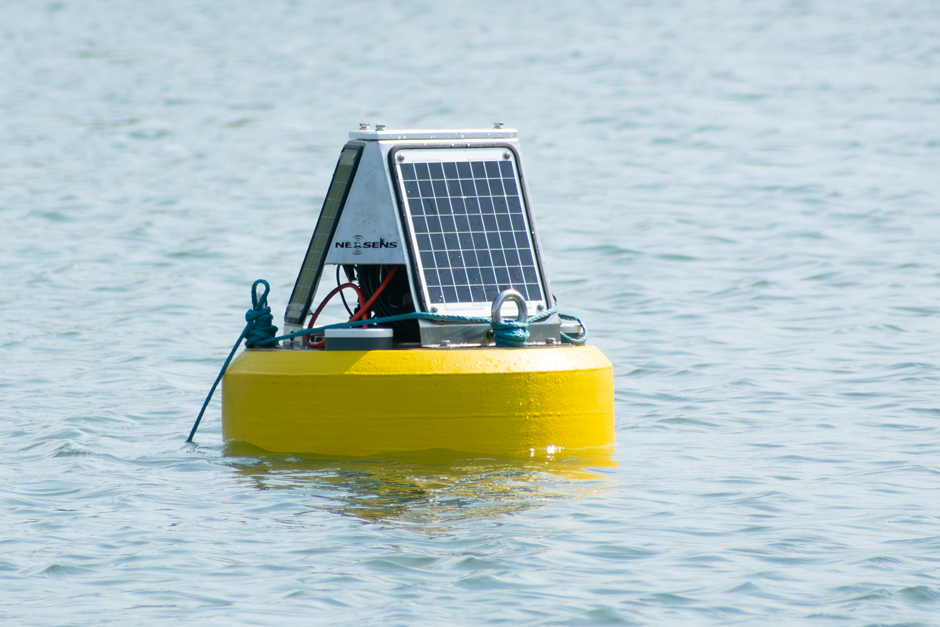
A NexSens Data Buoy collects and transmits real-time turbidity readings from the Seametrics Turbo Turbidity Logger in the Environmental Field Station pond.




0 comments